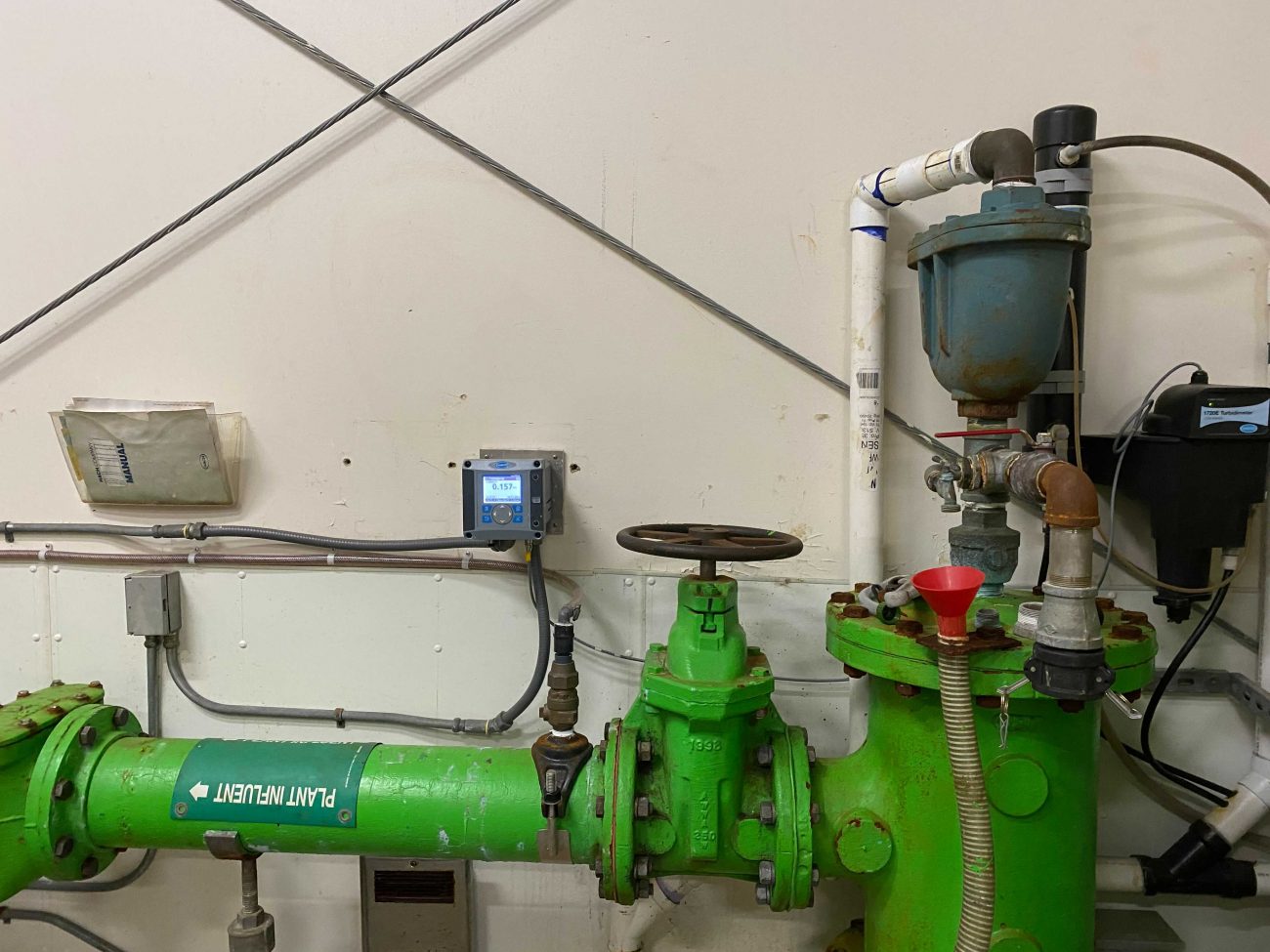
(Sage Smiley / KSTK)
This article is part of a series. Read part one here. Read part two here. Read part four here.
In the first installments of KSTK’s series on Wrangell’s Water Woes, we looked at how ageing reservoirs and a plant ill-suited to treat the city’s source water contribute to water flow issues in town. But problems at the plant have also led to Wrangell’s water to at times fail to meet state water quality standards.
In this third part of the series, KSTK takes a look at one of the reasons why: disinfection byproducts that end up in the city drinking water.
Laura Gile lives right in the middle of town, but she won’t drink the tap water.
“You shouldn’t smell water,” Gile says. “I’ve never smelled water that smells like cleaners.”
Instead, every Saturday, she drives 10 miles out the road to fill a three-gallon jug from a pipe sticking out of the side of the embankment.
“I’ve been going up the road because they test that water,” she continued. “And we’ve been drinking for years and it tastes good. The water in Wrangell used to taste like that, believe it or not.”
Gile’s concerns aren’t misplaced. Wrangell’s water plant is in an ongoing battle with a class of chemicals called disinfection byproducts. Wayne McHolland, the water plant operator, is frustrated.
“Sadly enough,” McHolland explains, “The water you’re getting now is the best we can give you, and that sucks. That just flat sucks.”
As we discussed in previous installments of this series on water, Wrangell’s water treatment plant has what operators describe as a faulty design, so it struggles to treat the reservoir water we drink. In order to meet state and federal water quality standards, disinfectants — namely chlorine — are added to the water as it leaves the plant.
But the leftover organic stuff in the water reacts with those additives. The reaction creates chemicals called HAA5s and TTHMs — haloacetic acids and total trihalomethanes. Also known as disinfection byproducts.
“It’s a common problem in Southeast Alaska,” says Cindy Christian. She’s the manager for the state’s drinking water program in Juneau. “Because most of the public water systems have surface water as a source, and because the area is very forested — heavily forested. You have the organic precursors [to disinfection byproducts] in the source water.”
Other Southeast towns have this problem too. But not all communities struggle the way Wrangell does because of its inadequate filtration plant.
It’s not that these additives will make you sick. At least not right away. But Cindy Christian says haloacetic acids and trihalomethanes are hazardous.
“Some of the longer term health effects are carcinogenic,” Christian explains.
That means they can cause cancer. She mentions bladder cancer as a possible consequence of drinking water with elevated levels of HAA5s. Disinfection byproducts are most dangerous when ingested, making showers and baths lower-risk activities, even when there are disinfection byproducts present.
She continues: “The EPA sets maximum contaminant level for this class of chemicals. And those are set based on a person an adult drinking two liters [per day] of water over a 70 year period.”
That’s the equivalent of about a half gallon of water a day for adults. The risk from disinfection byproducts is increased for children, pregnant mothers and the elderly.
Since 2015, Wrangell’s annual water reports show an almost-regular violation of HAA5s. TTHMs are often elevated, but still within allowable range. Wrangell was in violation of state DEC standards for HAA5s last year, with a yearly average of about 20 parts per billion of HAA5s above the maximum allowable average. The city has committed to additional water testing this spring, and more regular public communication about ongoing issues with disinfection byproducts in Wrangell’s water system.
For Wrangellites like Laura Gile, the way to deal with the issue is to not drink the tap water, drinking from 10-mile pipe instead.
The local tribe — the Wrangell Cooperative Association — has taken upon itself to test the 10-mile pipe because it knows people are drinking the water, either as an alternative to city water or because they live past the cutoff of city water at 6-mile.
Kim Wickman works for the tribe’s Indian General Assistance Program and says regular testing began in 2017.
“We have been collecting monthly samples ever since for coliforms,” she says. Wickman adds that the tribe also annually tests the pipe water for heavy metals, oil and grease.
Others in town filter the tap water before they drink it, whether with pitchers or larger installed filters.
To date, Wrangell hasn’t had to pay any penalties to the state for its water violations. Not a cent. That’s because the spikes in byproducts are seasonal, but byproduct levels are calculated over the course of the year. It’s a sort of regulatory loophole that has allowed the city to escape financial consequences.
At Tuesday’s borough assembly meeting, city officials discussed interim measures to combat disinfection byproducts in the system, and new $9 million water plant, approved in 2018 by the assembly, is still in the works. KSTK will cover these shorter and longer-term solutions in an upcoming part of our water series.
In the meantime, McHolland says that it’s probably a good idea to filter your tap water with activated charcoal before you drink it. Some filters are ineffective against disinfection byproducts.
I ask McHolland: Do you drink the water?
“Yeah,” he responds.
Do you think that’s hurting you? I follow up.
McHolland shrugs. “Guess we’ll find out.”
In the next installment of our series, we’ll look at solutions: Why they’ve been taking so long, and what options the city has to bring Wrangell’s drinking water up to snuff.
Get in touch with KSTK at news@kstk.org or (907) 874-2345.









